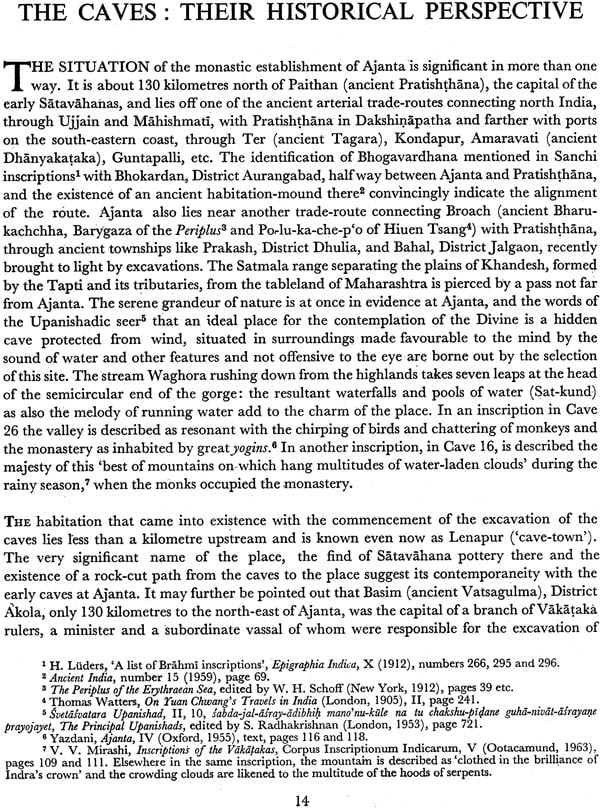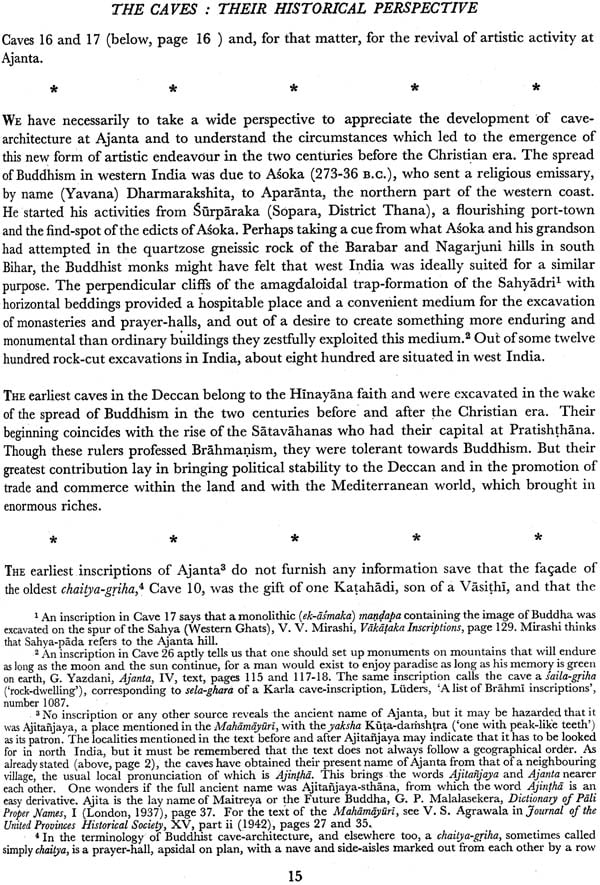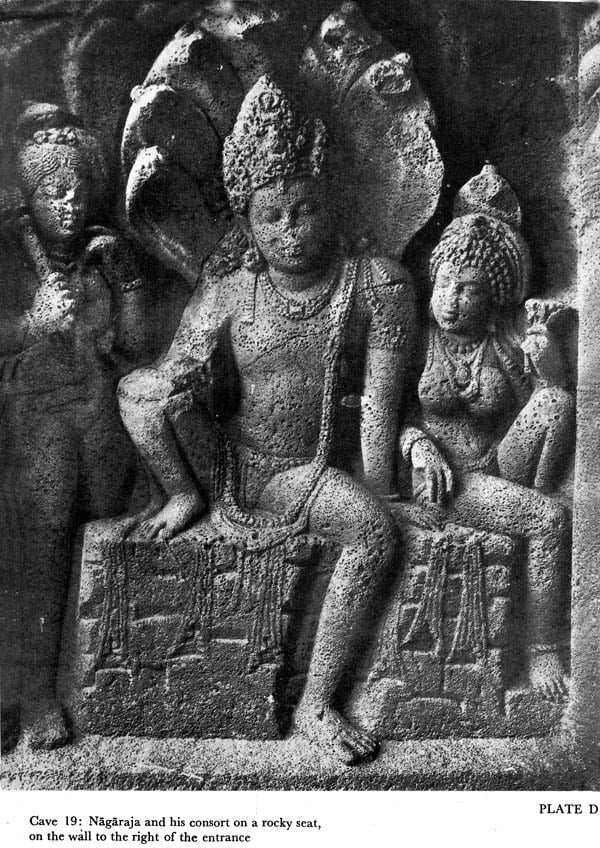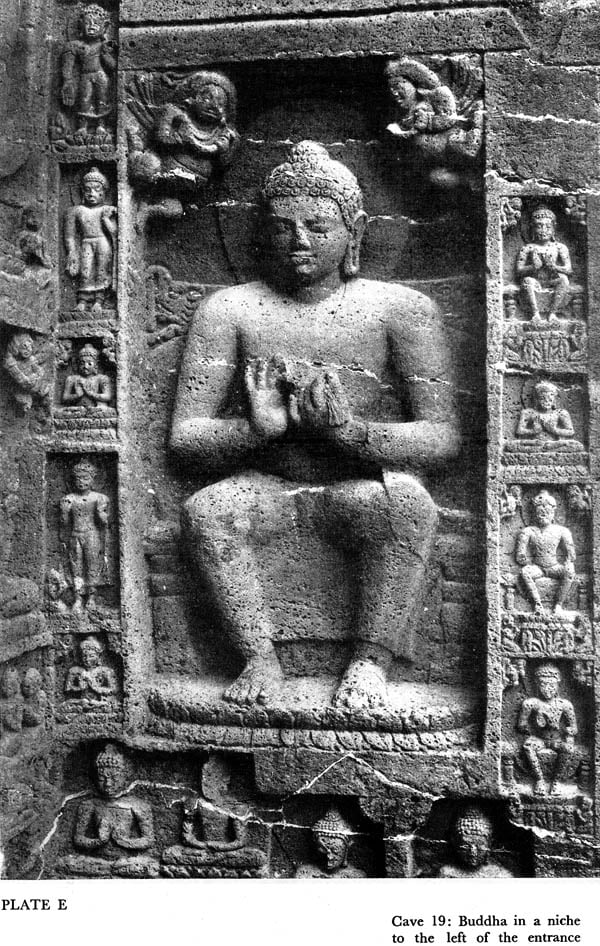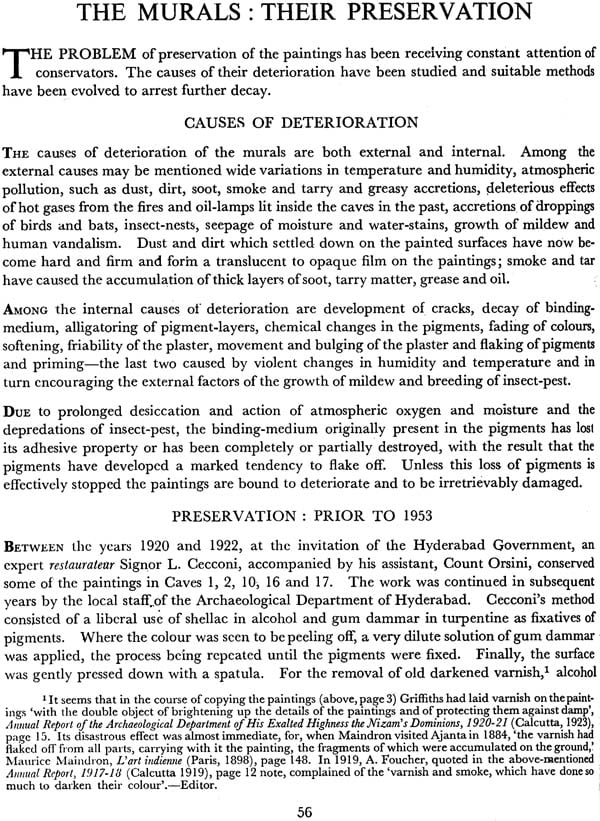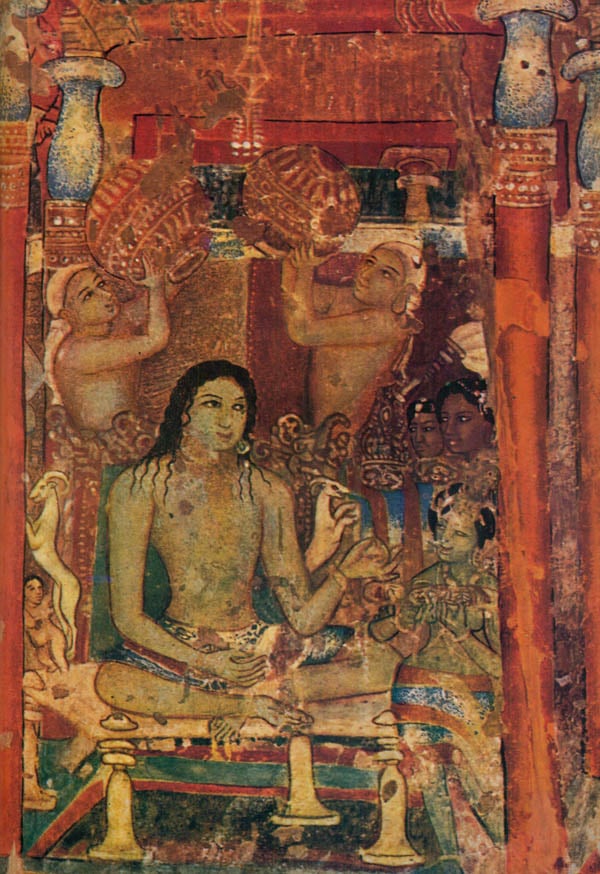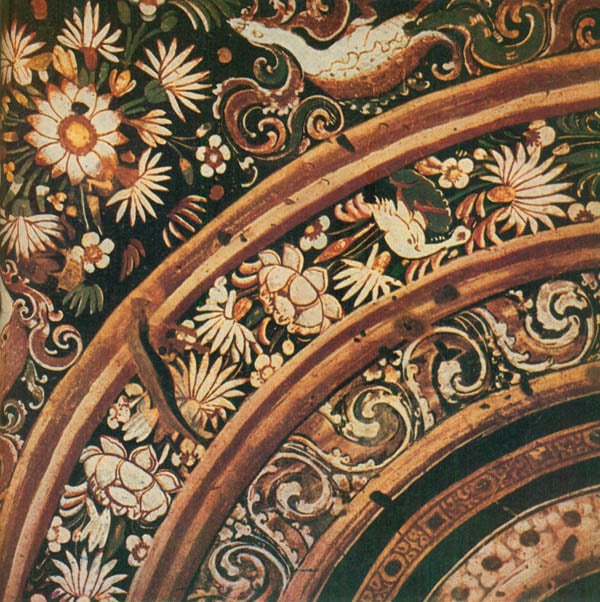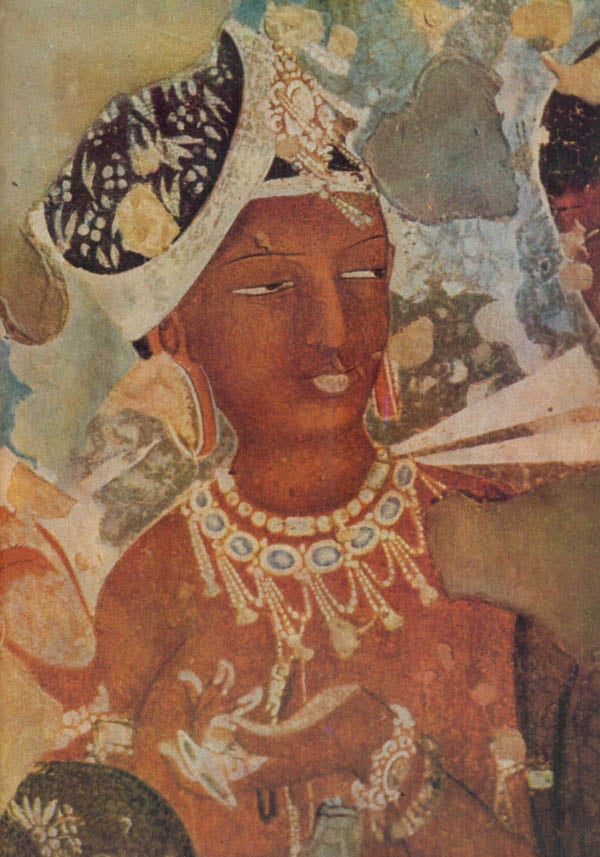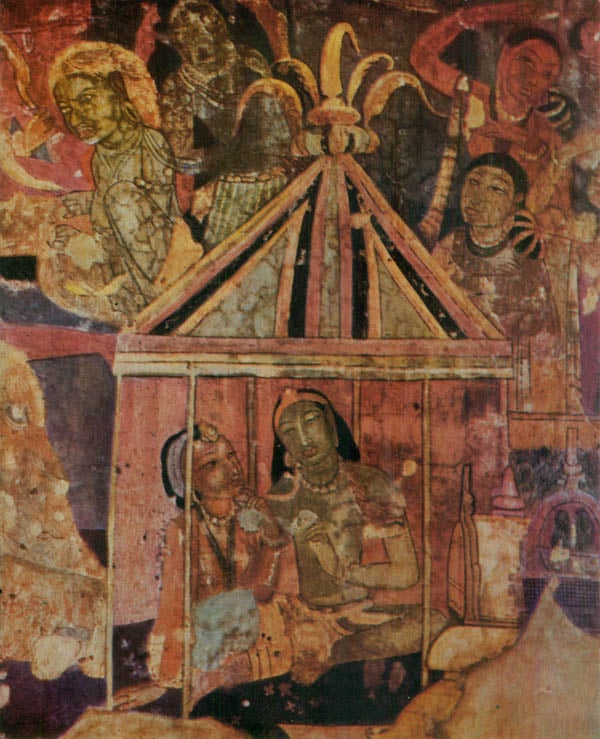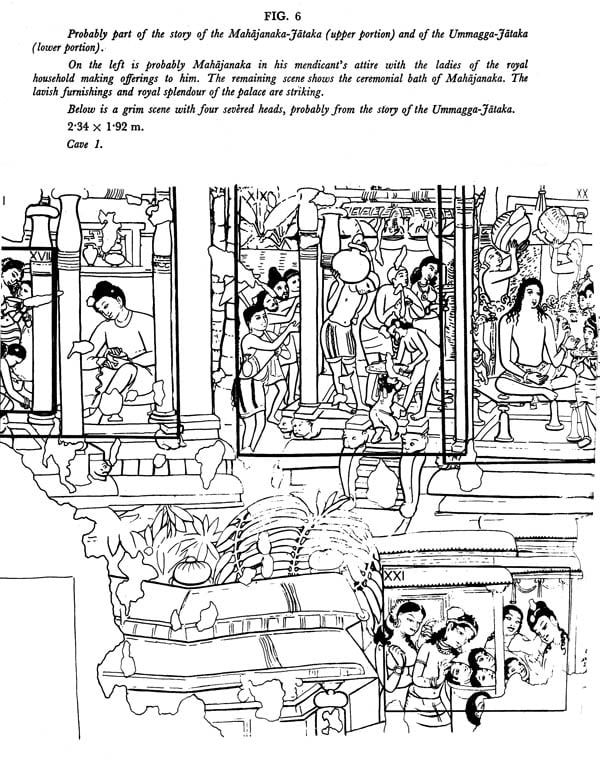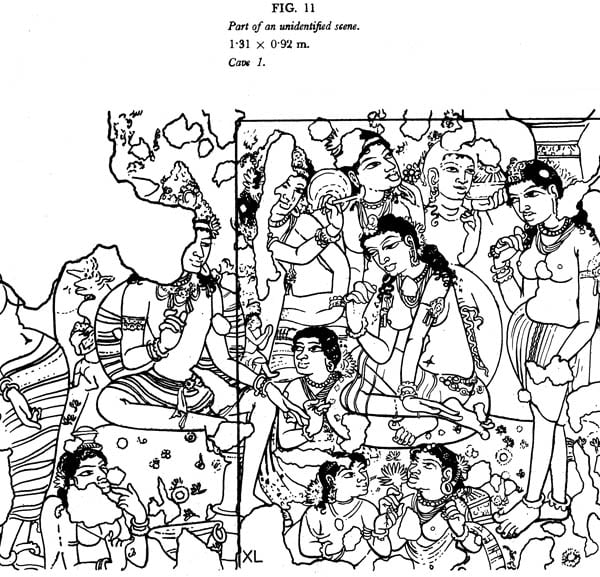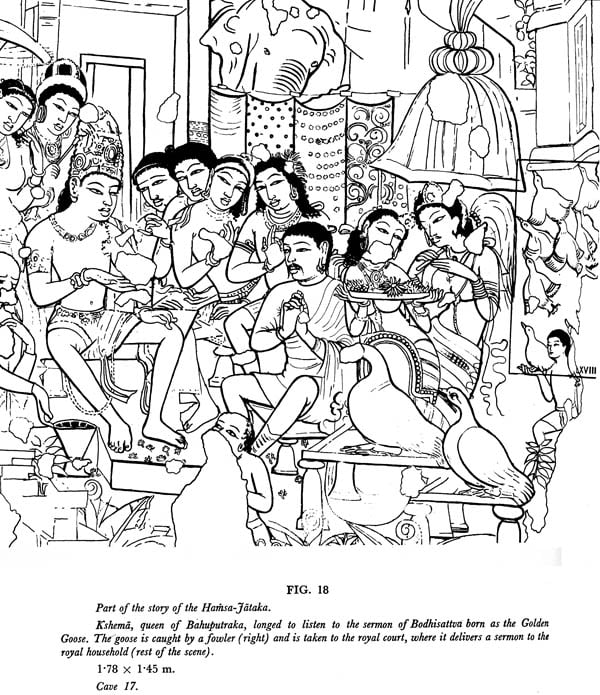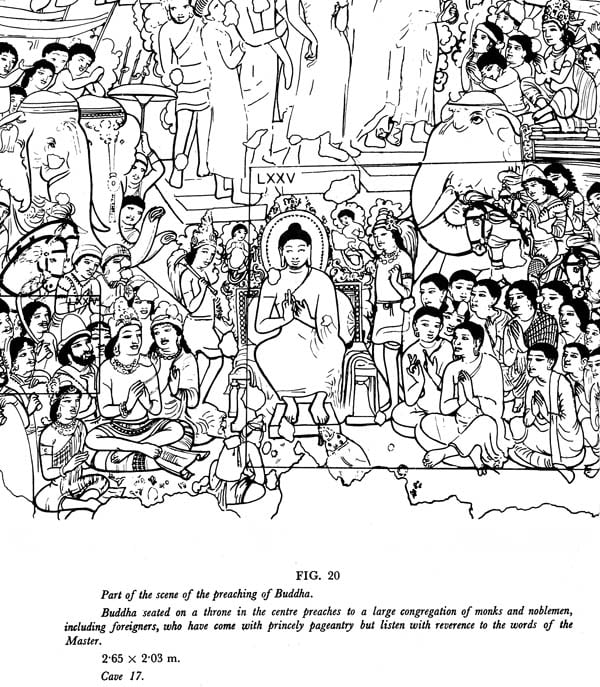
Ajanta Murals (An Album of Eighty-Five Reproductions in Colour)
Book Specification
| Item Code: | NAL459 |
| Author: | A. Ghosh |
| Publisher: | ARCHAEOLOGICAL SURVEY OF INDIA |
| Language: | English |
| Edition: | 1996 |
| Pages: | 252 (35 B/W and 89 Color Illustrations) |
| Cover: | Hardcover |
| Other Details | 11.0 inch x 8.5 inch |
| Weight | 1 kg |
Book Description
The Present Album is not intended to present a complete series of reproductions of the mural paintings of Ajanta. For that one has still to turn to the excellent four-volume portfolio brought out by the Hyderabad Government between the years 1930 and 1955. The aim here has been to present some outstanding and representative paintings of Ajanta in a convenient form so as to promote their appreciation. In such cases the selection can never suit everyone’s taste, but we have done our best. Nor is the text to be regarded as a complete treatise on Ajanta. The topics dealt with therein are designed only to be indicative of the vastness of the subjects.
The chapters in the text have been written by different hands. While Shri M.n. Deshpande, Director, School of Archaeological Survey of India, who has wide knowledge of the west-Indian caves, has contributed the bulk (three chapters), two chapters have been contributed each by Dr.B.B. Lal, Archaeological Chemist in India of the same Survey, who has been dealing with the chemical treatment and preservation of mural paintings and allied matters over India for a long time, and by Miss Ingrid Aall, art-historian from Oslo, who was working in Indian art a few years back. I am responsible for only one chapter, Introduction, and the Bibliography.
All the photographs reproduced reproduced in the Album were taken by. Shri S.G. Tiwari, Senior Photographer, Archaeological Survey of India, assisted by Shri Suresh Jadhav, formerly Photographer in the South-western Circle of the Survey. Shri S.P.Baukhandi, Artist in the same Circle, made himself useful in many ways in the production of the work: he prepared the line-drawing, checked, together with Miss Aall and also independently, the fidelity of the colour on the blocks and advised the printers about its rectification.
My sincere thanks are due to Shri Sailendranath Guha Ray, Director-in charge, Shri J.P. Guha Sales Manager and Shri S.K. Mitra Rai, Account Executive, Sree Saraswaty Press Ltd, where all the processing and printing have been done, for their intimate and personal interest in producing the best results. In fact, Shri Guha visited Ajanta (at no cost to us) for the purpose of comparing the colour on the proofs of blocks with that of the murals and substantially corrected them so as to ensure the nearest possible approach to the originals.
Finally, I have to thank Shri M.N. Deshpande, Shri H. Sarkar, at present Assistant Editor in the Secretariate of the Twenty-sixth International Congress of Orientalists, Shri M.C. Joshi, Assistant Superintendent, Archaeological Survey of India, and Shri S.R. Varma of the Headquarters office of the Survey, for their help in seeing the work through the press. In addition, Shri Joshi has also prepared the Index.
The World Ajanta conjures up before one’s vision a dream of beauty-of caves hidden in the midst of a lonely glen with a streamlet flowing down below, caves that were scooped out into the heart of the rock so that the pious Buddhist monks wanting a retreat from the busy world could live and pray there they embellished with architectural details with a mastery over the chisel, with sculpture of no mean order and, above all, with paintings of infinite charm. Rolling hills of the Maharashtra plateau encompass them and the streamlet Waghora, after a precipitous fall, cuts a gorge in front, later to emerge into an open valley. Looking down from the top of the opposite hill, from a spot called the View-point, one sees the hill with the caves spread out in a curve and the caves themselves like dark recesses punctured into the rock.
The only reference to the caves in ancient literature is that by Hiuen Tsang, the celebrated Chinese pilgrim who stayed in India for fifteen years in the first half of the seventh century, when Ajanta was approaching its decline. Though he did not visit Ajanta, his description is interesting: ‘In the east of this country (Mo-ha-la-ch ‘a=Maharashtra) was a mountain was a mountain range, ridges one above another in succession, tiers of peaks and sheer summits. Here was a monastery the base of which was in a dark defile,and its lofty halls and deep chambers were quarried in the cliff and rested on the peak, its tiers of halls and storeyed terraces had the cliff on their back and faced the ravine. This monastery had been built by A-ohe-lo of West India...Within the establishment was a large temple above 100 feet high in which was a stone Image of the Buddha above seventy feet high; the image was surmounted by a tier of seven canopies unattached and unsupported, each canopy separated from the one above it by the space of three feet. The walls of this temple had depicted on them the incidents of Buddha’s career as Bodhisattva, including the circumstances of his attaining bodhi and the omens attending his final passing away, all great and small were here delineated. Outside the gate of the monastery, on either side north and south was a stone elephant.
After centuries of oblivion and neglect, the caves were discovered in the first quarter of the last century, the earliest recorded visitors being some officers of the Madras Army, who saw them in 1819 and named them after the village Ajanta lying at a straight distance of 5 kilometres. The name ‘Ajanta’ for the caves as well has gained acceptance since then. During the next two decades, other persons, some of them again Army officers, also visited the caves.
The first scholarly report on the caves was by James Fergusson, who in a paper read at the Royal Asiatic Society of Great Britain and Ireland in 1843, described the rock-cut ‘temples’ of western India, including those of Ajanta. He placed the Ajanta caves in their architectural and chronological perspective and rightly observed that by virtue of the prolonged time-range of their excavations, they formed ‘a sort of a chronometric scale’ extremely useful in ascertaining the age of the other cave-series, none of which was as complete as the Ajanta one. He concluded: ‘The only series, therefore, that demands immediate attention is that of Ajanta.’
At the instance of the Royal Asiatic Society, moved by Fergusson’s report, the Court of Directors of the East India Company recommended to the Government of India the employment of some talented officers or of other means or of other means for getting copies of the paintings not only in the Ajanta but in other caves and preserving the caves from dilapidation. Even after much deliberation, nothing was done towards the latter end, but for the copying of the paintings R. Gill of the Madras Army was appointed, with adequate assistance. Between the years 1849 and 1955 Gill prepared copies in oil of about thirty painting. Most of them were destroyed by fire in 1866 in the Indian Court of the Crystal Palace at Sydenham where they had been displayed. Five of Gill’s copies which had not been displayed and therefore escaped destruction were sent to the Indian Museum, South Kensington.
Following the suggestion of James Fergusson, the Government of Bombay asked John Griffiths, Superintendent (later on Principal), Sir Jamshedji Jijibhai School of Art, Bombay, to report on the paintings. Griffiths strongly urged the preparation of records of what remained of the paintings, as a result of which a large number of student of the School were engaged to prepare coloured copies of the paintings under the direction of Griffiths. Griffiths took to his task with great zeal and understanding and made some discerning observations on the paintings, such as can be made only by an artist-copyist who comes to know every part of the copied painting and is, at the same time, emotionally equipped to appreciate it. He also foresaw the impact of Ajanta on the future art in India.
The work of copying continued from 1872 to 1885, with a break of three years, and was completed at a cost of fifty thousand rupees. Griffiths assures us that not a single copy left the caves ‘without my having examined it and carefully compared and corrected it with the original’. But misfortune once overtook Ajanta copies-in 1885, when many of Griffiths’ works were destroyed or damaged by fire in the Indian Museum, South Kensington. Some of the surviving copies were published in two sumptuous volumes in 1896; more than any other previous Publication, they drew the attention of the art-historian to the special position of the Ajanta paintings in world-art.
In the meantime the caves were being subjected to a more systematic study than what had been attempted before. In 1871 Fergusson, once again taking the lead, offered to edit the available material on the Ajanta and other caves. He and James Burgess of the Archaeological Survey of India set about the task, latter undertaking fresh surveys as well. Thus, the architectural details of the caves were scrutinized, their inscriptions were deciphered, providing material for their dating and sometimes their political affiliation, and the subjects of most of the sculptures but only some of the paintings were identified; it was easier to identify Buddha and his life- scenes both in sculpture and in painting than Jataka-stories.
In 1895 S.F. Oldenburg creditably identified eight Jatakas in the paintings, solely on the basis of unillustrated descriptions of Burgess (1879). In 1902 H. Luders, with the help of painted records, identified two scenes, including one already proposed by Oldenburg, with Jataka-stories as given in the Jataka-mala of Aryasura, thus establishing that some texts other than the traditional Pali Jatakas had been utilized in the rendering of stories at Ajanta.
In the winter seasons of 1909-10 and 1910-11 Lady Herringham copied some paintings with the assistance of Indian students-Syed Ahmad and Muhammad Fazlid-Din of Hyderabad and Nandalal Bose, Asit Kumar Haldar and Samarendranath Gupta of the Calcutta School of Art-all of whom were to acquire renown as distinguished artists in their later days, and of Dorothy M. Larcher of England. In 1915 the India Society published fifty-five of them.
Probably for the first time, in 1911, Victor Goloubew took photographs of the paintings. The details of his work are not available, but he published his photographs of paintings of Cave 1 in 1927.
Before 1919, when Alfred Foucher renewed his studies on the Ajanta paintings, about a dozen Jataka-stories had already been noticed in them, thanks to the efforts of Bhau Daji, Burgess, Oldenburg and Luders. Foucher’s researches succeeded in recognizing a much larger number-not only of the sculptured figures but of painted scenes-so that he could justifiedly claim that ‘the bulk of the work of interpreting the wall-paintings is two-thirds finished’. After him there have been some stray endeavours for fresh identifications.
| Introduction | 1 |
| Ajanta: an artistic appreciation | 8 |
| The caves: their historical perspective | 14 |
| The caves: their sculpture | 22 |
| The murals: their theme and content | 35 |
| The murals: their art | 40 |
| The murals: their composition and technique | 53 |
| The murals: their preservation | 56 |
| Bibliography | 60 |
| Index | 63 |
